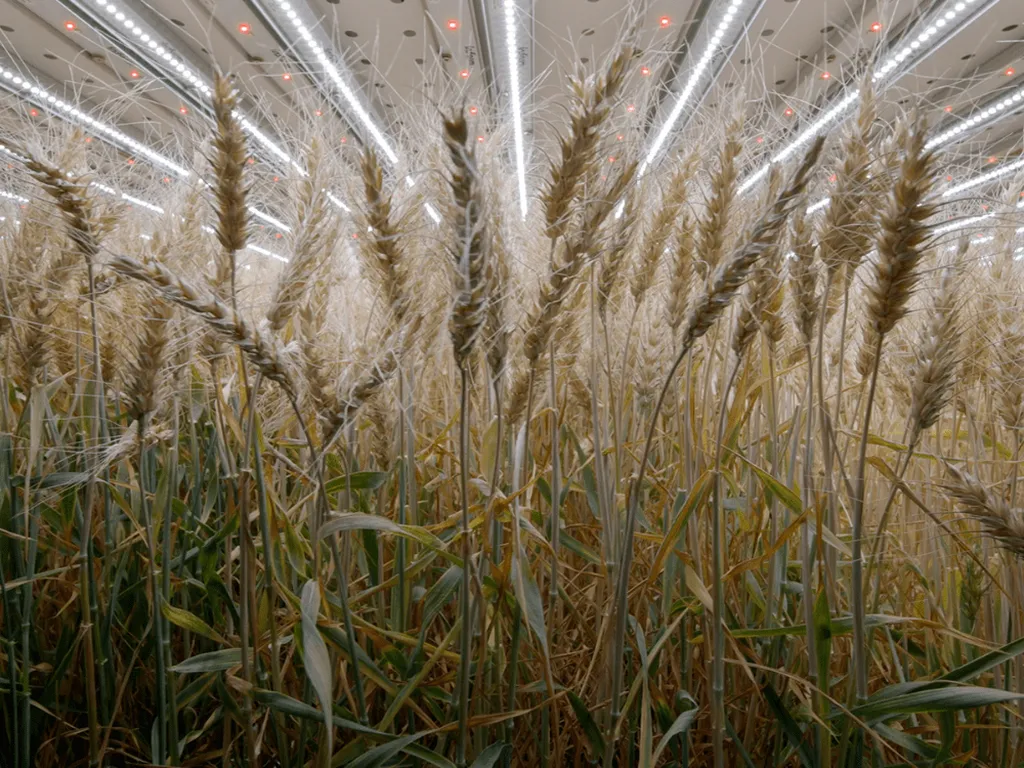In the quest to boost global food production and accelerate crop breeding, researchers have turned to indoor farming, and a recent study published in *Plant-Environment Interactions* has shed new light on how to optimize wheat growth in these controlled environments. The study, led by Jinglai Li from the Institute of Environment and Sustainable Development in Agriculture at the Chinese Academy of Agricultural Sciences, investigates the effects of light spectrum, intensity, photoperiod, and pattern on spring wheat growth, flowering time, and yield.
Wheat, being the third largest food crop worldwide, stands to benefit significantly from advancements in indoor farming techniques. The study found that under full-spectrum white LEDs, a color temperature of 3500K caused wheat to flower four days earlier and increased yield by 13% compared to a color temperature of 4500K at a light intensity of 500 μmol m⁻² s⁻¹. “This indicates that the light spectrum plays a crucial role in wheat development and productivity,” Li noted.
The research also revealed that increasing light intensity to 700 μmol m⁻² s⁻¹ accelerated flowering by 3–10 days compared to lower intensities of 300–500 μmol m⁻² s⁻¹ and achieved the highest yield. However, continuous light led to a 13% yield reduction compared to a photoperiod of 22 hours at the same daily light integral. This finding underscores the importance of balancing light duration and intensity to optimize wheat growth.
One of the most intriguing findings was the potential for dynamic light intensity patterns to trigger early flowering while saving approximately 30% of light input. “By adjusting the light intensity at different growth stages, we can potentially achieve more than seven generations of wheat per year,” Li explained. This could revolutionize speed breeding programs, allowing researchers to accelerate the development of new wheat varieties with desirable traits.
The commercial implications of this research are substantial. Indoor farming can help increase wheat production in urban areas, reduce the environmental footprint of agriculture, and enhance food security. By fine-tuning light recipes, farmers and breeders can maximize yield and efficiency, making indoor wheat farming a viable and profitable venture.
As the agriculture sector continues to evolve, the insights from this study could pave the way for innovative indoor farming practices. By leveraging the power of light, researchers and farmers can work together to meet the growing demand for wheat and other crops, ensuring a more sustainable and food-secure future. The study, published in *Plant-Environment Interactions*, highlights the potential of indoor farming to transform agriculture and offers a glimpse into the future of crop production.

